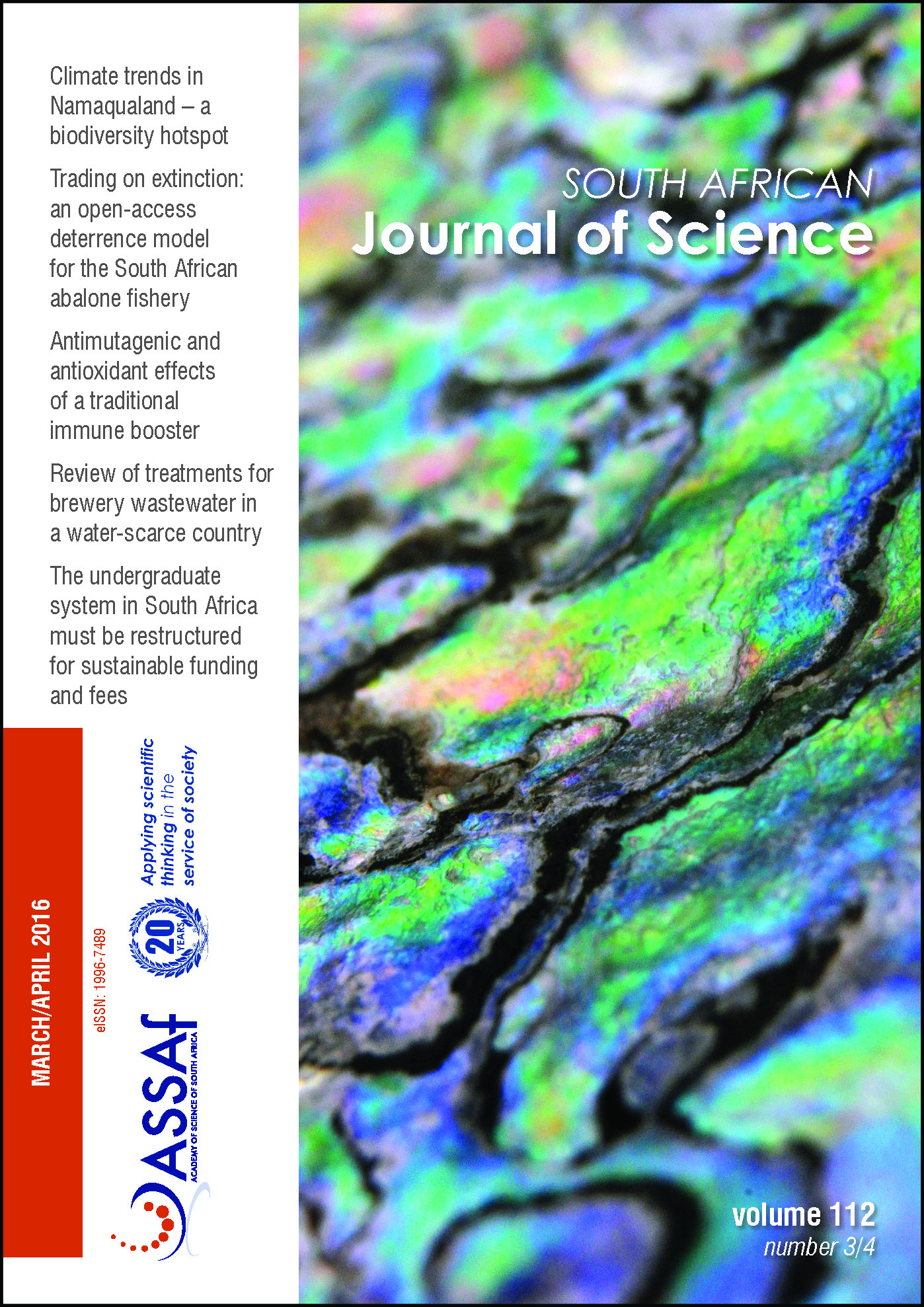Fertigation of Brassica rapa L. using treated landfill leachate as a nutrient recycling option
DOI:
https://doi.org/10.17159/sajs.2016/20150051Keywords:
fertigation, landfill, treated leachate, Brassica rapa L, nutrientAbstract
Optimising nutrient availability and minimising plant metal contamination are vital in sustainable agriculture. This paper reports experiments in which treated leachate was used at different concentrations with predetermined N content for fertigation of Brassica rapa L. (leafy vegetable). An inorganic fertiliser, with N content equivalent to the leachate amount, was also prepared, as well as a control. Growth (leaf length, leaf width and stem height), harvest parameters (total number of leaves, root length and root dry weight) and specific growth rates (mm/day) were determined for three consecutive seasons. The dry weights of leaves, roots and stems in the leachate treatments were within the ranges of 1.95–3.60 g, 1.18–3.60 g and 0.33–1.37 g, with biomasses of 1.75 g, 1.14 g and 0.2 g, respectively, which were higher than those of the control. B. rapa L. fertigated with 25% diluted treated leachate recorded high specific growth rate and a leaf length of 0.53 mm/day and 0.23.17±0.58 cm, respectively (%N=0.023; p<0.05). The maximum permissible mineral concentration set by the Food and Agricultural Organization of the United Nations/World Health Organization (FAO/WHO) was compared with that of the grown plants. Treated leachate can increase plant nutrient content.
Published
Issue
Section
License

This work is licensed under a Creative Commons Attribution 4.0 International License.

All articles are published under a Creative Commons Attribution 4.0 International Licence
Copyright is retained by the authors. Readers are welcome to reproduce, share and adapt the content without permission provided the source is attributed.
Disclaimer: The publisher and editors accept no responsibility for statements made by the authors
How to Cite
- Abstract 398
- PDF 453
- EPUB 179
- XML 188












.png)